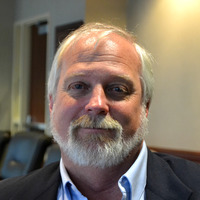'Champions' Make Diverse Spin-off Teams More Successful

It’s become increasingly popular to commercialize innovation or technology from universities via spin-off companies. However, this process can be challenging because it usually originates in a science environment then transitions to a business context. One of the key problems is that people with two wildly different perspectives -- engineering and business -- must work together to move the innovation to market. Often they find it difficult to talk to one another, to agree on the venture's approach, and to stay focused on the same goal.
We focused on those challenges in our year-long study of one diverse entrepreneurial team at Florida Atlantic University, which sought to commercialize a new tool for remotely diagnosing potential skin cancers. The upshot: we discovered that the key ingredient for success was having a “champion,” or a strong leader who could manage both the engineering and business teams, keep everyone focused on key objectives and communicate the project’s overall priorities.
Introduction
Newly founded high-tech university spin-offs face growing pains and high levels of both market and technological uncertainty, as they move beyond science into the business processes related to opportunity exploration and validation. Just like technological ventures that don’t start at a college or university, academic spin-offs face difficulties positioning themselves in the market. But they also face specific, unique challenges regarding team formation, evolution and functioning. As such, evidence suggests that on average, non-academic new ventures perform better than their academic counterparts.
Typical high-tech university spin-offs are created by engineers who come from noncommercial environments. While adding business experts can boost the market-related competencies needed to succeed, the jury is still out on whether the consequences of diverse entrepreneurial teams are constructive or damaging.
On one hand, diverse teams are seen as complex groupings, suggesting the distinctive challenge of operating and organizing such teams. Interdisciplinary teams may experience conflicts of interest and face tensions as one side focuses on the scientific research of the technology and the other side researches the market positioning and acceptance of the venture. On the other hand, diverse teams may present advantages over other teams in terms of creativity, generating innovation, and even overall performance. By linking individuals with technical experience to those with management and entrepreneurial experience, the project is presented with higher quality products/services as well as with valuable insights into the common challenges associated with new venture creation.
Not surprisingly, investors often highlight the quality of the management team as the most important factor when it comes to making investment decisions. For example, a survey performed in 2016 by Propel(x), an online angel investment platform, revealed that three quarters of the more than 300 angel investing respondents said that management team characteristics -- such as integrity, clarity of strategy, professionalism, and determination -- were their largest consideration for investing. Thus, it is crucial to understand what prompts diverse entrepreneurial teams to collectively agree on the venture’s approach and emerge as creative cohorts rather than complex collectives.
Our research goal
In this particular research endeavor, we sought to understand what factors, interactions, resources, and procedures contribute to the successful (or unsuccessful) formation and evolution of an interdisciplinary and intergenerational team. Its mission was to commercialize a new university-founded technological innovation: an application that would allow remote medical analysis of potential skin cancers. Our research goal was to prescribe how future university-based spin-offs might create, market and manage a new high-tech venture across disciplines and generations. As such, we paired a team of students (undergraduate and graduate) and faculty from engineering and business disciplines at Florida Atlantic University (FAU) with a group of experienced business professionals who served as mentors. This team was under the direction of the managing director of FAU’s technology business accelerator, which served as the project manager for this venture. We collected real-time data by participating and/or observing the venture for a year, as well conducting interviews and analyzing documents and diary entries provided by the participants.
The venture
In this instance, the project involved developing and executing a strategic plan aimed at commercializing a unique, novel and potentially disruptive technology. Specifically, the technology combined advanced imaging with artificial intelligence (i.e., machine learning) to diagnose skin cancer through a simple digital image of a skin lesion, which is analyzed via software application. The technology was about 80% developed before the project started, with completion planned by the end of the one-year project timeline. However, the accompanying business model and associated market were completely unknown. Thus, the project represented a relatively common scenario within universities: development of an innovation/technology without a clear market or business model.
Initially the team presumed that going directly to the market/end user would be the most appropriate deployment strategy—i.e., people who are likely to suffer from skin cancer (or have had skin cancer in the past and are therefore statistically more likely to have issues in the future). From a technological perspective this diagnosis software could be embedded in a mobile application that any cell phone user could then download and utilize to diagnose any new or concerning skin lesions to assess their risk of being cancerous. However, this simple model did not prove viable because searching the app store for a mobile application to diagnose a skin lesion is not natural human/consumer behavior, and consumers reported being uncomfortable with using a mobile application for potentially serious medical diagnosis. Therefore, the team was forced to pivot and investigate other markets and deployment strategies, which they did for the duration of the project.
While operational and organizational challenges can be common in such diverse teams, we found that creativity, innovation, and overall successful team formation is possible when one individual assumes a “champion” role to improve cross-functional communication and coordination as well as provide clear objectives and visibility of project status. This person should be named early in the process so that he or she can drive the idea, clarify the objectives, ensure all team members understand them, keep participants informed of the project status throughout the duration, and ensure they communicate with one another more frequently. Below, we outline the importance of finding this champion, illustrate why enhancing cross-functional communication and clear objectives/project status is important, and show how the startup champion can positively promote them.
The need for a ‘champion’
Leadership is a crucial aspect of successful venturing. Within university spin-offs, it is imperative for a participant to take the champion role to drive the idea forward and assemble the team based on the required competencies. When asked about leadership, participants in our study noted that the team didn't need leadership for inspiration or empowerment (charismatic and transformational leadership qualities). These are already inherent characteristics of pioneers in both the engineering and business disciplines. Instead, the team needed an administrator who could coordinate their work and set priorities. Many of the participants noted the lack of scheduled meetings and said they felt disconnected from one another in the few meetings that did take place. Thus, the champion in this case is a transactional leader who is prepared, directs the proper exchange of resources, and communicates shared understanding regarding tasks, goals, and next steps. Increased administrative direction would improve the cross-functional communication and the visibility of clear objectives and project status as described below.
Cross-functional communication and coordination
To successfully link a technology to a market, this diverse team needed to combine two different thought paradigms—the scientific viewpoint and the business viewpoint—and this created some confusion regarding the team’s vision, strategy, and day-to-day operations. The two sides disagreed even on basic terminology. For example, members of the business group sought “competitive advantage” in marketing the eventual commercialized product, whereas the engineering representatives sought to take “unfair advantage” of potential competitors. More importantly, an imbalance between these very diverse but equally important mindsets hindered knowledge sharing. Existing research has found that inter-generational teams have a harder time integrating diverse academic statuses, which mitigates the benefits derived from multiple mindsets in a university spin-off. For example, when professors and students work together on a team, their disparity in academic status may create differing norms that can impact the role expectations towards lower-level members by fostering conformity and lack of participation.
Interestingly, in our specific project we found the division to be between the disciplines (business and engineering) much more so than between generations (status within academia). The division between disciplines did not create conflicts or arguments between the two sides, but instead simply put a wedge between them that prevented them from exchanging information and expertise. Both teams are specialists in their respective fields, yet they were unable to fully exploit their knowledge without explicit cross-functional communication and coordination.
By “explicit cross functional communication and coordination,” we mean that communication must almost be forced between the two disciplines by, for example, requiring them to meet frequently. When asked how he felt communication could have been improved, the business professor exclaimed:
“More meetings, and I hate meetings, put that in the record. But in some instances, you do need to meet… A better strategy would be… [to] determine how often we need to communicate and force that communication, instead of presuming or assuming that the communication that is likely to take place, may take place… I think it would have greatly benefited our progress”
Once the team did meet though, everyone was impressed by the collaborative and passionate efforts put forth demonstrating positive and constructive team dynamics. Many of the participants remarked how shocked they were not to experience the conflict or negative stigma that is perceived to materialize when combining engineering and business disciplines. For example, one of the engineering professors noted:
“…to me, it was surprisingly effective to see that, even though each sub team had a lot of freedom to do their thing, the things that we did converged quite well… nobody tried to prove that engineering was more important than business or vice versa or any nonsense like that…”
Therefore, openly urging additional cross-functional communication and coordination would increase the cooperative and positive efforts of both disciplines and magnify the potential for information and expertise exchange. When team members are forced to interact, more members appreciate how both the engineering and business disciplines perceive the same issue or opportunity. Furthermore, because academic members do not work on the spin-off full time, increased interaction between team members decreases the likelihood for some to “free-ride” or withhold their effort in the startup, which can mitigate potential conflict between the sub-groups. The project's champion, in this instance, can be seen as a transactional leader who focuses on the proper exchange of resources between the disciplines by finding the correct reward and punishment systems to "force" the two disciplines to connect and communicate.
Clear objectives and visibility of project status
Existing research has also found that using of external specialists or mentors in university-based spin-offs can be unsuccessful, as these academic entrepreneurs typically have limited social capital and are reluctant to give up control. Our research allowed us to find out exactly what mentors needed to increase their participation and enthusiasm about a university venture. The mentors noted that, on top of cross-functional communication, clear objectives and visibility of project status were crucial to their contribution. Specifically, the finance and regulatory mentor commented:
“…sometimes [the meetings] quite honestly came on short notice. From my participation, I felt that it was not as engaged as I thought it might be… [and] because of my disconnect I don’t even know the status or how things have progressed to this point.”
Similarly, the management and operations mentor noted:
“it would have been interesting to see more updates or at least be more involved in what progress was or was not being made.”
It was not only the mentors, though, who relayed confusion regarding project intentions and purpose. When asked about the most difficult challenge to meet, one of the engineering professors stated:
“…to get some clarity on what exactly was expected from us and what would be the measure of success. For me, it was a little bit difficult to figure out what exactly is the scope, what exactly are these people expecting from us, and I don’t know if I found an answer to that…”
Once again, a champion was needed to form a shared understanding of objectives and to continually communicate the status of the project.
This project was the first in a three-year process developed by researchers at FAU. As this development continues, our goal is to present a more detailed, in-depth longitudinal study of the team processes involved in a series of technology commercialization projects at a research university.
Learn More
STEM Students and Faculty Can Gain Entrepreneurial Thinking and Skills
How Strategy and Industry Should Shape Your Choice of Co-Founders
Minefield or Opportunity? How to Work Constructively With Universities
After the Big Idea: Entrepreneurial Success Through High-Performance Startup Teams





